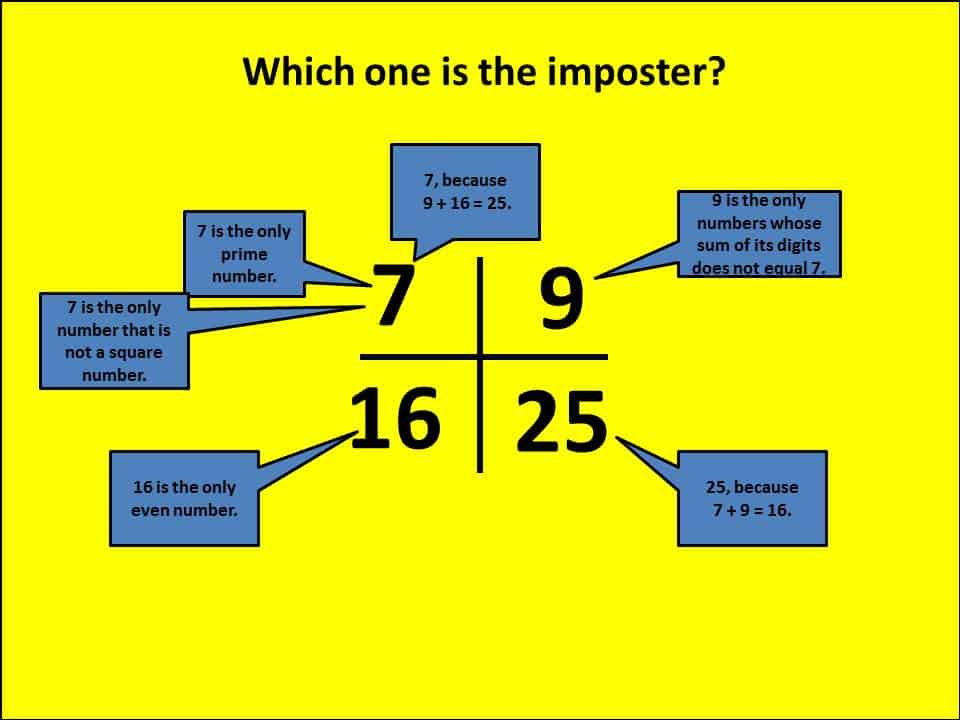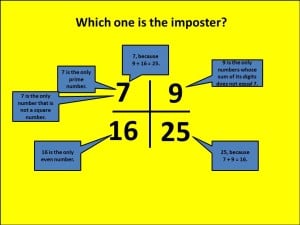Over 15 years ago, I began using Imposter Sets in my math classroom. Imposter Sets frequently produce rich, insightful discussion about important math concepts. Students readily embrace the mystery of Imposter Sets. Classroom discussions are frequently characterized by investigation, exploration, and wonder. Those are powerful responses to a strategy that is actually very simple to use.
Recently I was asked to share more about Imposter Sets. What are they? How can they be used in the classroom?
You’ll find several resources below. I just recorded a video explaining Imposter Sets, and there is also a PDF ready for you to download. I hope your classroom will be filled with a sense of investigation and wonder.
Click Here to Download Sample Imposter Sets PDF
Enjoy the video!
Using Imposter Sets in the Classroom
If you would like to learn about more animated math instructional strategies, you’ll find additional posts listed on the left, including the “I’m on a Learning Mission” all-time most popular post The Animated Multiplication Table.



Leave a Reply